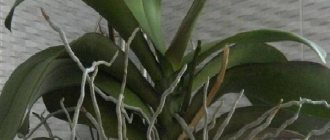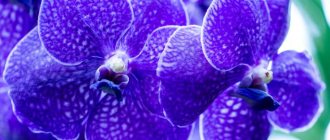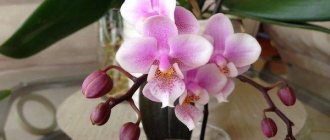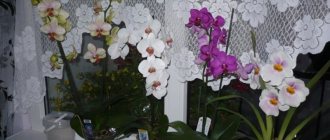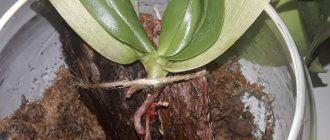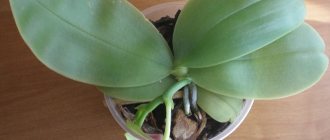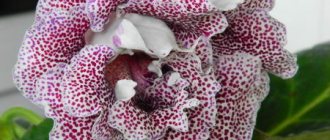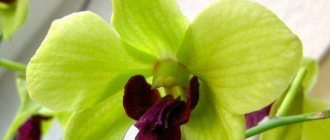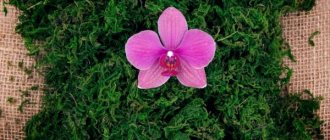Magnificent indoor flowers in pots give only a distant idea of the diversity of species in nature. Wild orchids are an excellent subject for studying biodiversity and the problems of its conservation. Conservation of endangered wild species is very important.
Representatives of the large botanical family Orchidaceae of the class of monocots are found on all continents except Antarctica and the northern polar regions. Herbaceous terrestrial perennials, woody vines, and epiphytes living on branches and trunks of tropical trees and shrubs predominate. A large number of species are found in warm countries, tropical and equatorial forests. Lignified orchids in nature, photos of which are presented in the article, reach 30 m in length and live up to 50–70 years.
Several species from different genera of the family live on rocks and rocky surfaces in the middle zone of mountains, for example, Angrecums are found at altitudes of up to 2000 m. Middle latitudes cannot “boast” of a large number of species, but representatives of the Orchidaceae family in the temperate zone are not inferior in beauty to their tropical "brothers". According to scientists, there are 30 thousand natural species of orchids and 5 times more cultivars and hybrids created under artificial conditions.
Orchids and man
The ancient Greek scientist Theophrastus called the orchis with paired thickened tubers “orchid,” which means “testicle-like.” The name stuck and was transferred to the entire botanical family. Exotics from Asia and South America conquered England at the beginning of the 19th century.
According to legend, gardener William Cattley planted a strange epiphytic plant in a tub and observed the appearance of large fragrant flowers on the shoots. In honor of the man who discovered wild orchids to Europeans, the Latin name of the genus Cattleya appeared. Cattleya labiata is the national flower of Brazil and is also revered in other South American countries. For its beauty and fragrance, cattleya is sometimes called the “queen of orchids.”
The main differences between wild orchids
For a long time, scientists could not make this flower home. The main features that distinguish it from its indoor relative:
- This is an ancient plant of the Orchid family, which appeared even before the birth of the first person.
- The root system is more developed than that of house plants. It is necessary to obtain large amounts of moisture and nutrients from the air.
- The plant itself may vary in size depending on the region. The height varies from 20 to 150 cm.
- It blooms once or twice a year for no more than two months.
- The colors of the buds may differ significantly from those that gardeners are used to seeing. There are more than 400 varieties of the crop.
- The stem of the plant is thick, as this is necessary to counteract the wind.
Reference. Wild orchids vary greatly depending on their habitat. They are well adapted to rocky soil, trees and soil. Moreover, in each individual case the plant has its own characteristics.
Unique creatures of nature
Millions of years of evolution have focused on the survival and interaction of plants with insect pollinators. Botanical scientists have found that the first orchids appeared on Earth at least 30 million years ago. A number of researchers claim that the pollen of these plants was found in rocks that are 80 million years old. When flowering plants occupied almost all ecological niches, orchids had to win their place in the hierarchy of relationships with other families. They resorted to a trick, luring pollinators away from more ancient angiosperms.
Everyone who has seen an orchid bloom in nature has enjoyed the magnificent spectacle. As botanists and ecologists note, some species imitate female bees, wasps, and butterflies, and use flower parts to retain pollinators. The result of adaptation to a certain type of insect was the joint evolution of plant and animal. The so-called specialization in orchids is narrowly focused and consists in complete dependence on a small number or a single pollinator.
Plant life cycle
The lifespan of almost all types of orchids is very long. So, the average age of these plants is 60 - 80 years. It is curious that among orchids there are long-livers - in some cases, a flower can grow for more than a century.
The natural method of propagating orchids is by seed. The delicate aroma and beauty of the flowers attract insects, which pollinate the flowers. When the orchid's flowering comes to an end, an oblong box with seeds appears on the peduncle.
Under natural conditions, some types of orchids form babies on peduncles or aerial roots. Small shoots usually appear when parts of the plant are damaged by animals.
Orchid blossom is an unforgettable sight
The unusual shape and unique coloring of the petals, spur, and perianth are all necessary to attract pollinators. The “lip” of orchids is a kind of “landing platform” onto which insects descend. The deeper a small animal climbs for nectar in the spur, the more plant pollen collects on the limbs, head and bristles of the body.
The structure of a flower in the form of a trap, the skillful repetition of the appearance of a female insect - only part of the tricks that plants resort to to deceive their pollinators. A wild orchid, a flower familiar to many inhabitants of the northern continents, is Lyubka bifolia. The flower arrow does not appear on this plant every year. Lyubka rests for one season after six years of seed production.
Flowers that look like birds
The incredible resemblance to birds makes one simply freeze in front of the beauty of these plants.
Habenaria radiata in the form of a bird strikes with its resemblance to the elegant “white heron”.
And these graceful snow-white petals of the flower are so reminiscent of the spread wings of a truly magical bird!
The tall peristeria seems to have “sheltered” a tiny dove in its bud, thanks to which it emanates silence and peace.
Because of its unearthly beauty, this flower almost became an endangered species.
Reproduction of orchids in their natural habitat
The entire development cycle of representatives of the Orchidaceae family is tied to certain factors, which is why they are so vulnerable in nature. Most mother plants do not provide endosperm to the seeds. Once in the ground, they need the help of soil fungi. The influx of carbohydrates from the outside ensures germination and shoot development. There are types of orchids that have completely switched to symbiosis with fungi underground.
Vegetative propagation by aerial shoots and lateral shoots arising on thickened stems and peduncles is widespread. These small plants are called “baby orchids” by gardeners. In nature and indoor conditions, plants are capable of vegetative propagation by dividing an adult bush into two parts.
Common types of orchids
There are a huge number of orchids found in nature. Their color range is even more diverse. Among them are black, red, yellow, purple and pink shades. Often there are small inclusions on the petals that make the flower even more amazing.
Royal
The orchid is large and belongs to the Phalaenopsis family. The flower can reach 10 cm in diameter. Volumetric leaf blade and long peduncle. However, such specimens are rare in nature, since these are works of selection. Flowering lasts up to 7 months. In this case, the second peduncle practically does not appear, since a lot of the plant’s vitality is spent on maintaining the huge flowers.
Lyubka bifolia
This plant is found in temperate forests. It has another name - night violet. The appearance is not admirable, but it has a pleasant aroma. Inflorescences appear in early summer, and seed pods appear in August. In autumn, the leaves and peduncle die off.
goodyer repens
It has a creeping rhizome, with its help reproduction occurs. Lives in coniferous forests. It is distinguished by its ability to switch to an underground lifestyle under unfavorable conditions. Produces greenery and blooms only when there is enough light.
Lady's slipper
The plant got its name due to its unusual shape, which resembles a shoe. There is a legend according to which the goddess Venus lost her shoes while walking in the forest. The species lives in forests of temperate latitudes. The plant requires a lot of moisture and loves shade. The color is varied and has a pleasant aroma.
Nest
Refers to saprophytes. The plant has no green mass, and the main color is brown. The root system is woven into a tight knot and resembles a nest. This is where the species got its name. The shoots are long with a yellowish tint, the inflorescence is a tassel. Propagated by seeds.
Orchis spotted
In our country, the plant is known as “cuckoo tears”. Orchis spotted is a medicinal plant. Prefers to grow on marshy or clayey soils. Widely distributed throughout Russia, except the Caucasus. The tuber, accumulating nutritional components, is able to survive frosts.
Representatives of the Orchid family in the tropics and subtropics
The most diverse orchids are in Southeast Asia and Latin America - regions from where most species bred as indoor flower crops came to Europe. Great damage was caused to populations by excessive collection of exotic plants in tropical areas. The barbaric theft of orchids in places of natural distribution decreased after their introduction into culture and the appearance of hybrids.
New species continue to be discovered in hard-to-reach regions. So, in the early 1980s in China, scientists found hitherto unknown species of the Lady's slipper. Among tropical exotics there are many that are beneficial, for example Vanilla flatifolia. One of the most expensive spices in the world is obtained from the fruits of this orchid. The enchanting aroma of expensive chocolate, high-quality baked goods, and many perfume compositions is due to natural vanilla.
Guests from Vietnam
Orchids from Vietnam have become very popular among gardeners due to the beauty of their buds and easy care. But special attention should be paid to planting. If you do everything correctly when planting bulbs, then this exotic plant will delight you with its beauty for a long time.
In Vietnam there are 2 types of seedlings: aerial and ground. Aerial ones grow into tree trunks, while terrestrial ones grow on trash soil.
When selecting Vietnamese plants, choose medium-sized bulbs. Under good conditions, buds will appear only after 4-6 years.
Do you like white flowers? This bouquet will delight you for many years.
A surprise from Vietnam - yellow beauties.
A black flower of rare beauty amazes with its originality and magical appearance.
Orchids in European forests
On the territory of Russia, Belarus, and Ukraine, there are about 130 species that belong to the Orchidaceae family. These are representatives of two genera: Orchis and Slipper.
Almost all types of orchids in the countries of Eastern, Central and Western Europe are classified as rare, endangered and protected. The distribution in nature is decreasing due to habitat disturbance due to deforestation, grazing of livestock in meadows, and drainage of swamps. Harvesting for medicinal rhizomes and bouquets are also among the main reasons for the decline in the number of beautiful flowering plants.
Scientists have calculated that by 2050 in Europe the number of existing species will be reduced by exactly half.
Russia is home to northern orchids
The famous Bryansk forests - the pride of Russia - are the habitat of 22 species of wild orchids. This part of the range is dominated by beautiful and rare plants (lady's slipper, dormant orchis, neottiana capulata, hiding place, nesting plant, neottiana, lady's slipper, Lyubka bifolia and others).
Wild orchids are protected by law in Russia; nature reserves and sanctuaries have been created to preserve and increase the number of rare plants. 8 species of plants from the Orchid family are listed in the Red Book of Russia:
- Gastrodia is high.
- Liparis Lezel.
- Neottiana capulata.
- Palmate roots - P. baltic and P. trifolia.
- Dormant orchis and two more species - I. burnt and I. three-toothed.
Problems of preserving orchids in nature
Flowers in the forest, near a pond, on a mountain or dry steppe slope differ in their adaptations to their habitat. Orchids in nature are great at surviving in jungle and taiga conditions, but the ecological plasticity of plants is limited. Unfortunately, lady's slipper and orchis are on the verge of extinction. In most countries, wild orchids are preserved in nature reserves, botanical reserves, and in national parks where environmental management is limited.
Ecologists and employees of botanical gardens of the Russian Federation have proposed a way out of the current situation with the protection of rare plants. They can be transplanted from places where intensive land development and economic activity is carried out into suitable protected natural areas.
